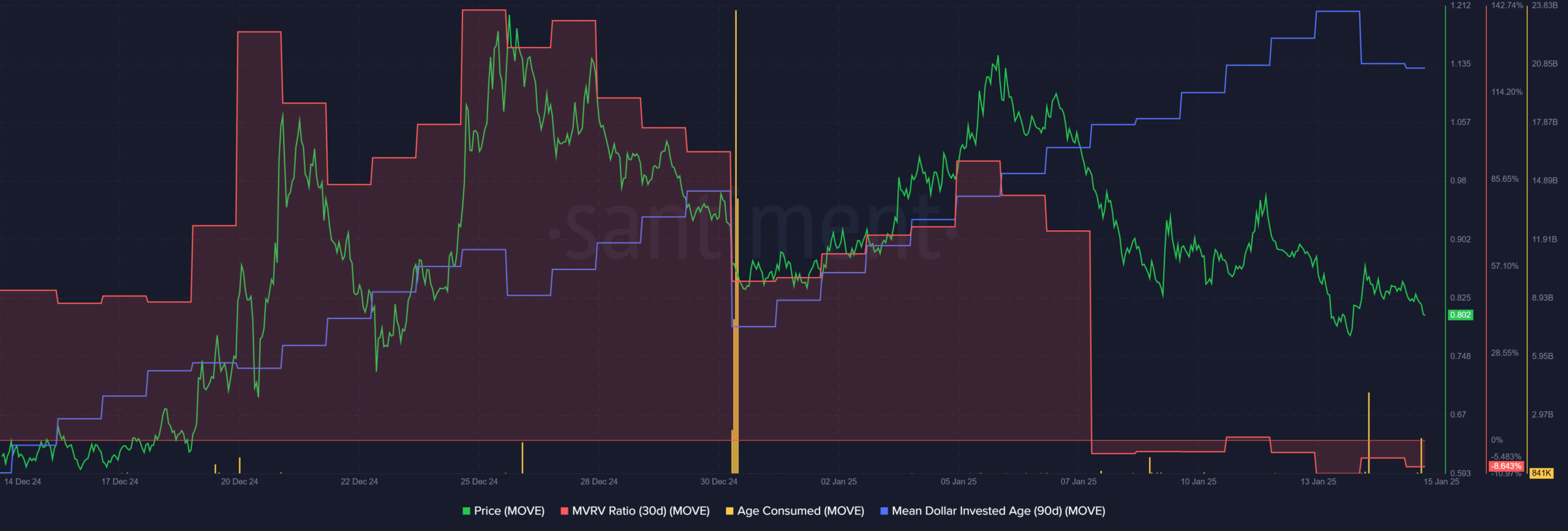- MOVE fell below short-term range lows and has yet to recover
- The rise in MDIA meant that new investments were not coming in and holders were not moving their tokens.
Movement (MOVE) saw an 11.16% rise in 16 hours after hitting its low of $0.786 on Monday. This was followed by a 9% drop over the past 36 hours. The end result was that MOVE was trading within 1% of Monday’s lows, at press time.
Meanwhile, Bitcoin (BTC) gained 8.7% from Monday’s lows. The $92.4K region was firmly reclaimed as a demand zone and BTC appeared to be heading towards its $102K resistances. The disparity in the price movements of the two assets is telling. Especially since this underlined the relative weakness that MOVE demonstrated.
By sifting through Movement signals, bears have an advantage


Source: MOVE/USDT on TradingView
The 4-hour price chart highlighted a nearly one-month range from $0.83 to $1.13. As highlighted earlier, the recent rebound was not enough to reclaim the range lows as support. The subsequent drop below $0.83 was also a worrying sign.
Over the past two weeks, the A/D indicator has also declined. This consistent downtrend indicates continued selling pressure and weakness from buyers. It seemed likely that MOVE would fall to $0.728 or lower in the coming days.


Source: Santiment
On-chain metrics weren’t optimistic either. The 30-day MVRV ratio was slightly negative. This means that short-term holders have less reason to sell their holdings since they are already at a loss. But that would be little consolation.
Consumption age was also quiet in January. The metric generates spikes when a large amount of tokens, or older tokens, are moved: the larger the spike, the greater the collective age of the tokens being moved.
Read Movement (MOVE) Price Prediction 2025-26
The 90-day average dollar investment age was also on a steady upward trend. This alluded to holders not moving their coins and could indicate network stagnation.
Given that Movement has only been trading for a little over a month, MDIA’s uptrend is not a worry for bulls. However, it is possible that sharp price increases will follow the MDIA slowdown.

